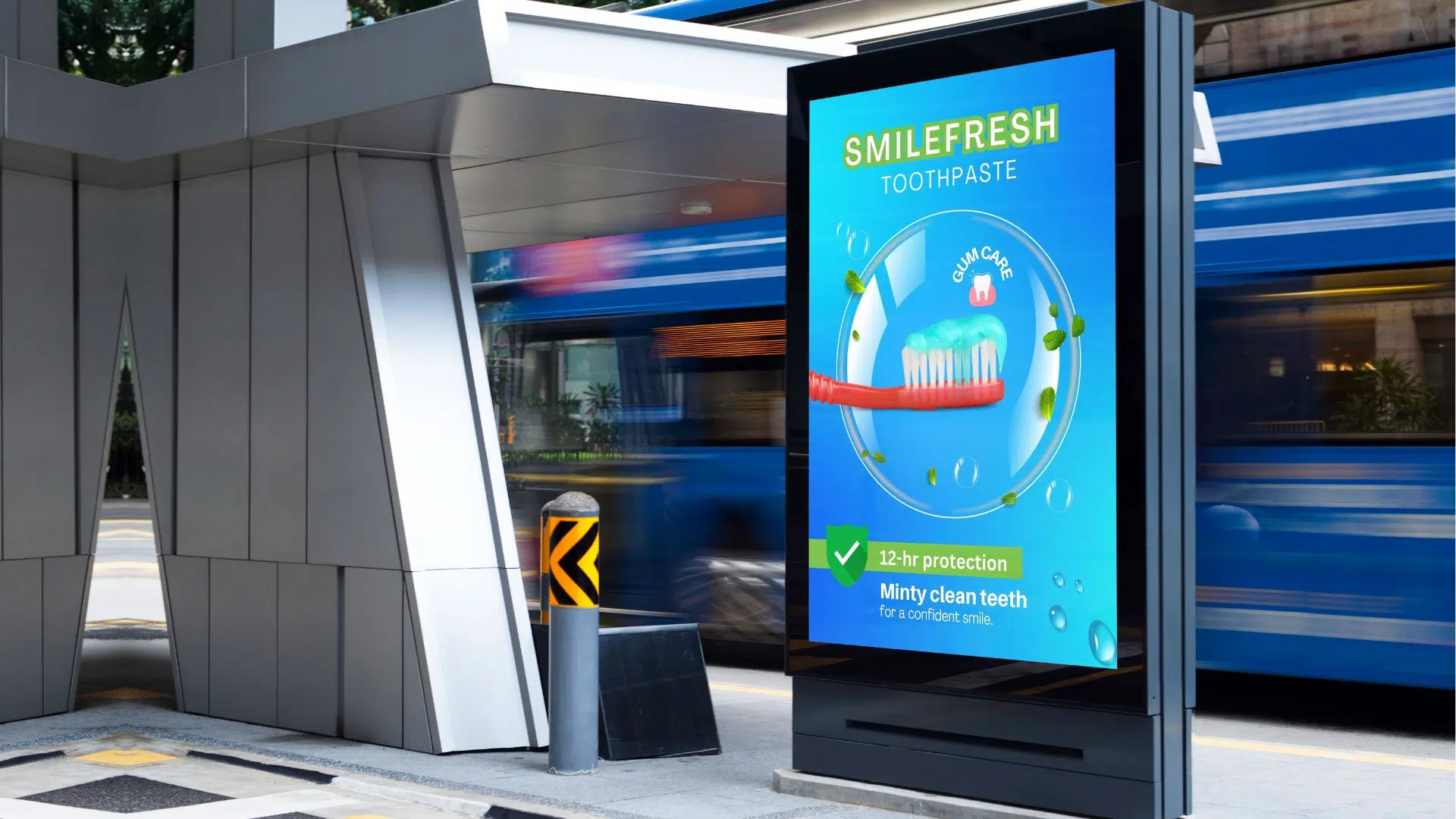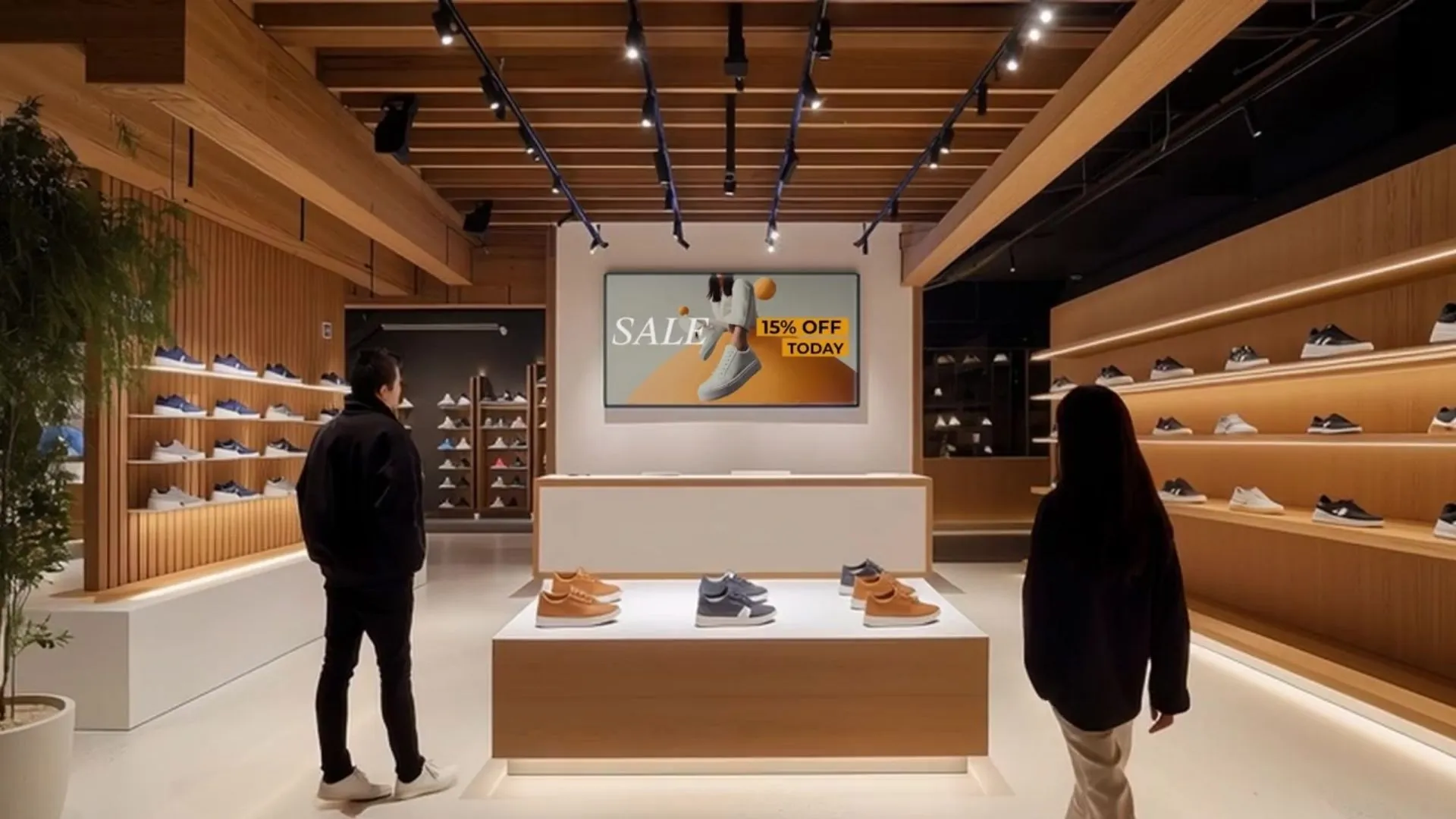Digital-Out-Of-Home Signage: A Guide
by Scala Team
Digital-Out-Of-Home Signage: A Guide
by Scala Team

What is DOOH?
DOOH advertising refers to any type of digital display outdoors that has the ability to reach a large and diverse audience. These types of ads can be found in high-traffic public areas such as airports, public promenades, at roadsides and in shopping malls and so on, and they typically present themselves in the form of digital billboards, LED signs and video walls.
DOOH is the digital evolution of out-of-home (OOH) signage, which makes use of static assets that are typically found on walls or large posters without a digital element tied to it.
Why Use DOOH?
Unlike static OOH signage, DOOH signage makes for a much more engaging and attention-grabbing experience for its audience and is favoured over traditional forms of advertising.
First and foremost, it is highly customisable and able to be targeted to specific audiences, based on your offering. If you are promoting tickets for a tourist attraction, for example, you could simply display your ad on a video wall located in the airport and even showcase a special discount code or promotion for incoming tourists. Strategically-placed DOOH signage is a great way to ensure that your products or services are visible to the right audience at the right time.
DOOH signage also allows brands to measure the impact of their advertisements and ad spend. Often linked to the back end of a DOOH display is data that can tell you how many people have seen your ad and how long they have viewed it, or if they have taken any action as a result of viewing your ad. Modern-day advertising definitely comes with its challenges but eliminating the guesswork and tweaking your ad through valuable data is a great way to increase the ROI on DOOH ad spend.

Types of DOOH
1. Interactive Displays
This is a type of DOOH signage that allows viewers to interact with the advertisement, be it through playing a game or allowing them to browse through your products. The audience are transformed from passers-by to active participants, physically engaging with displays.
Interactive DOOH can be used for a wide range of purposes from advertising and awareness campaigns to virtual browsing or shopping applications. Interactive displays often include a gamification element or social media integration, and typical examples include touchscreen displays, gesture control and sensor-based displays and AR displays.
2. Digital Billboards
The modern cousins of the regular billboards you typically see in high-traffic areas such as highways and popular shopping districts, digital billboards are large-format displays that usually feature dynamic video content to attract attention and keep viewers engaged.
3. 3D Billboards
We can’t talk about digital billboards without talking about one of the most exciting trends in DOOH signage: 3D. 3D digital billboards can either be comprised of specialty screens specifically designed for 3D display, or of ordinary digital screens that use clever design to create an illusion of 3D using forced perspective. Think of a 3D art installation where ocean waves seemingly crash out of the screen only to disappear into thin air, or giant product advertisements where objects appear larger-than-life.
4. LED signs
These involve using light-emitting diodes (LEDs) to create a digital display, showcasing bright and vivid images. LED signs are one of the most popular types of DOOH and can be found almost everywhere — from restaurants and retail shops to stadiums and other large venues.
5. Video Walls
Commonly found in public spaces such as shopping malls, these large displays are made up of multiple smaller LED or LCD screens to provide viewers with an immersive experience.
Things to consider before you invest in DOOH
The world of DOOH advertising is an exciting one, where technology and creativity come together to leave a lasting impression on the audience. But there are some things to consider before diving into the world of DOOH signage.
1. Know your audience
DOOH signage may not be suitable for every brand or campaign, depending on your target audience. For example, if a large portion of your target audience are seniors, they are potentially less likely to be tech-savvy and may not interact with the ad as imagined compared to a younger target audience. Depending on your industry and target audience, it might be more favourable to stick with more traditional forms of advertising such as print or radio.
2. Cost
Like all forms of effective marketing, DOOH signage requires a decent investment. Securing DOOH advertising space can be costly, especially for very high traffic areas and popular destination. On the flipside, DOOH can get your products or message in front of literally hundreds of thousands of people at a time, and so there is almost nothing more effective for brand visibility. Be sure to weigh up the costs and benefits.
3. Regulatory considerations
Like any form of public advertising, DOOH is subject to relevant regulations and compliance. Depending on where you wish to place your ad, densely populated areas might impose a restriction on size, location, or content on outdoor displays which could potentially limit its reach or effectiveness. There are also usually regulations that govern what types of products and businesses can be advertised to the public at scale.
Scala Leads the Way in Digital Signage
Scala provides a wide range of customised digital signage solutions ranging from interactive technology and predictive analytics to augmented and virtual reality. Our goal is to use smart marketing technology and digital signage to boost digital development across various sectors. Throughout the course of 30 years, we have been recognised for our ground-breaking and high-quality technology.
Find out more about Scala’s digital signage solutions Scala’s digital signage solutions and transform your marketing strategy today.
About the Author:
Scala digital signage experts share their experience and thoughts in our blog to provide practical tips and advice for real-world applications. Our team aims to offer interesting content through a variety of formats including long form articles, video logs, interviews and infographics.




